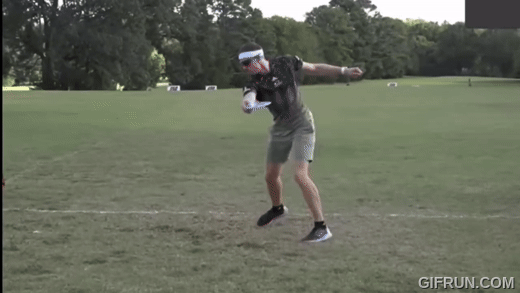Yes, good you discovered that. I would alsp encourage you also look at seabas22 double dragon and elephant walk to encode the motor program for the natural cycle of protraction in backswing and shifting toward retraction as you commit the throw, opposite reciprocating pattern in the other shoulder. It works like walking and also is part of training balance. Solves several problems at once.
This kind of reminds me of problems in brain imaging where you have systems for anatomy, but they don't cleanly solve all referencing problems. One system that emerged for brain scan alignment was the anterior commissure to posterior commissure line. It's always identifiable in a normal brain, and then you can make coordinate systems relative to that. So you could pick a single reference line and just use degrees deviation from that line, or something less granular is probably fine. Your middle finger palm system is consistent with that reference line idea, I think.
Interestingly I'm also thinking about the average "user experience" person in coaching and the reason software developers usually work with them in large companies now - someone that is less technical might prefer something like your alphanumeric system because it is kind of easy to decode in a glance.
So probably depends a little on what your overall goal is in the end from a precision and usability end. I am leaning toward the middle finger and middle base of palm idea, thinking more about the "best" way to decode relative to that.
You have part of the leg patterns, but not the balance, leg action, and
hip action really.
Notice that in most pro movement you usually don't get a ton of leg flexion or extension once the legs are interacting with the ground, because the way you balance when you walk involves natural tilt and that "FIgure 8" action you see discussed around here. You are also not interacting with gravity the way you normally would when walking. You're kind of bouncing around on that leg without ever really being balanced on it (ask my how many ways there are to do it "wrong" and I may never stop writing).
I can keep writing words or draw you a diagram, but I would go right to Double Dragon. Get everything moving forward and back toward the target in tilted axis, reciprocating your arms back and forth.* It takes everything I'm talking about, dials it up to "11", making it easier to find and feel what I'm saying overall. It is also consistent with your path of discovery about "straight back" or "wide" reachbacks and might help you understand why they function in that context. I don't think you've ever felt what I'm trying to get you to feel. I've tried every other coil drill I have ever seen on the market, and that DD drill is maybe the only one I've encountered that reliably teaches it when done well! It is literally the same drill I always use when I am working on X-step or standstills myself when I can feel my coil is drifted out of whack. I do it 2 or 3 times and recognize it immediately again, then work forward from there.
BTW, DD also helps you understand why Tamm's move looks smooth and balanced and Hebenheimer's looks more "explosive". Which do you think is more "efficient"? You may also learn why they have different grip pressures, too

*Don't get distracted whether you think the move is a swing or a pull. Drill is about all of the above and kinetic chain training in efficient harmony with gravity.


